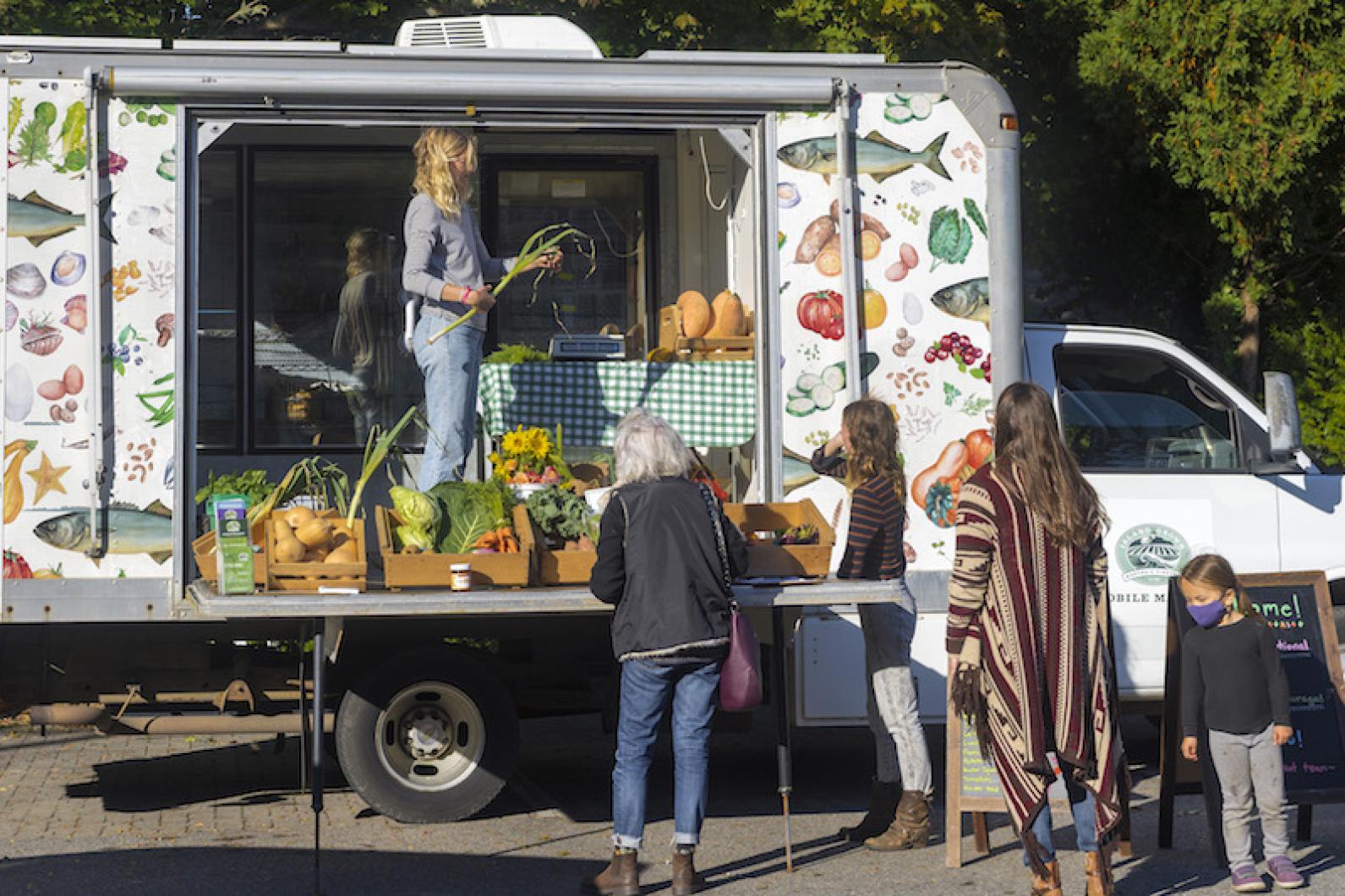When the Martha’s Vineyard Fishermen’s Trust began its seafood donation program earlier this year, the nonprofit ran into an obstacle that regularly confronts other Island anti-hunger groups: a shortage of places to store the food on its way to the people who need it.
“We had 40,000 containers of soup, so we made 50 pallets’ worth,” director of operations Peter Lambos said Thursday at a meeting of the Island’s Food Equity Network at the Agricultural Hall in West Tisbury. “We were able to store eight pallets on Island,” Mr. Lambos said. “We had to pay to store the rest in New Bedford.”
While commercial freezer space, like that required for the fishermen’s donated chowders and stews, is particularly hard to come by on the Vineyard, accommodations are also tight and scattered for refrigerated and dry storage, as well as food preparation and indoor sites for distribution.
The space crunch can be seen as one indication of the extent to which access to good food for Islanders has expanded over the five years since the food equity network first gathered to focus on feeding the Vineyard’s hungry at a higher standard.
An informal coalition of public and private social service agencies, churches, farmers, fishermen and grocers, the network has sparked collaborations among groups that formerly operated independently — and significantly improved the quality and availability of nutritious food to those in need.
The Island Food Pantry, which became a program of Island Grown Initiative in 2021, now offers fresh produce, whole-grain breads and frozen meats alongside the canned and bagged dry staples that formed the bulk of its offerings a few years ago.
While the pantry still has no permanent location, clients now select their groceries at the P.A. Club in Oak Bluffs instead of picking up pre-packed bags of non-perishables from a church basement.
Among other initiatives the food equity network has fostered, senior citizens and shut-ins are receiving soups made by volunteer chefs in borrowed commercial kitchens, using gleaned Island vegetables and seafood.
The Island Grown mobile market sells affordable fresh vegetables, eggs and other local produce in Vineyard neighborhoods weekly.
IGI also developed a popular free summer lunch program before the pandemic, and with Covid-19 quickly began growing more produce, including Brazilian vegetables, at its Thimble Farm hub in Vineyard Haven, to reduce reliance on the supply chain from off-Island.
But even with these and other programs, such as church-based community suppers and food baskets, gaps remain between what’s available and what’s needed, food equity network members said at last week’s meeting.
Many people with special diets have to pass up much or all of the prepared meals provided to them, according to Michele Dupon of Elder Services of Cape Cod and the Islands, who coordinates the Vineyard’s Meals on Wheels program.
“It would be really nice to be able to cater to the different [dietary requirements],” Ms. Dupon said.
Homeless people, and those who are minimally housed without adequate kitchen facilities, can’t heat up the frozen soups, lasagnas and other prepared dishes available from the food pantry, said pantry program manager Sharon Brown.
And many Islanders who are eligible for SNAP — the federal Supplemental Nutrition Assistance Program, which provides debit cards formerly known as food stamps — aren’t taking advantage of the benefits at grocery stores, county SNAP coordinator Delilah Meegan said.
“It’s not stigma so much as lack of knowledge,” Ms. Meegan told the group.
In addition to paying for groceries, SNAP has an additional benefit called the Healthy Incentives Program that credits cardholders back for locally grown produce from farmstands and farmers markets, including the mobile market, the West Tisbury Farmers Market and Morning Glory Farm — making those purchases essentially debit-free.
“There’s billions of dollars being set aside for SNAP . . . already paid for,” said Kayte Morris, IGI’s senior director of food equity programs and former Island Food Pantry director.
On top of that, SNAP benefits are set to increase 25 per cent in December, Ms. Morris added.
At Thursday’s meeting, network members formed a “SNAP gap” subcommittee to work on encouraging more use of the program by eligible Islanders.
Another working group will tackle finding more food storage on Island to forestall supply chain kinks.
IGI executive director and food equity network founder Rebecca Haag — whose mantra for the group has been “getting the right food to the right people, in the right way,” — also unveiled an ambitious new goal: A central location for all of the food equity programs to base their operations.
“We need to build an Island food center,” Ms. Haag told the group.
Still in the earliest planning stages, Ms. Haag said the center would provide a permanent home for the food pantry, along with a commercial kitchen, a small dining room and a warehouse with ample dry, refrigerated and frozen storage.
It could potentially be built large enough to also serve as emergency food storage, Ms. Haag said, pending planned conversations with Island emergency managers.
“We need more infrastructure,” she said. “We are working on a long-term solution.”
More information about the Supplemental Nutrition Assistance Program (SNAP), with a contact link for Ms. Meegan, is posted on the Dukes County website here.
Links for the Island Food Pantry and Mobile Market are posted on the Island Grown Initiative website here.
Meals on Wheels sign-up information is online at the county-wide First Stop website here.







Comments (2)
Comments
Comment policy »